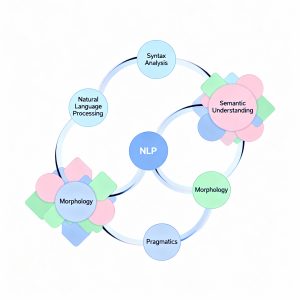Selecting the right large language model (LLM) for production is a pivotal decision for organizations building AI-powered applications. The choice between proprietary solutions like OpenAI’s GPT-4 and open source alternatives such as Llama 3 or Mistral directly impacts development speed, scalability, compliance, and long-term costs. Understanding the trade-offs between these options is crucial for aligning technical architecture with business goals.
Proprietary vs. Open Source LLMs: Core Differences
Proprietary LLMs, such as those from OpenAI, are closed-source, cloud-hosted models accessed via API. They deliver state-of-the-art performance, robust developer tooling, and require minimal setup. In contrast, open source LLMs can be downloaded, modified, and hosted on private infrastructure, offering full control over data, customization, and deployment—but demanding greater technical expertise and operational investment.
| Factor | OpenAI (Proprietary) | Open Source LLMs |
|---|---|---|
| Setup Time | Minutes (API key) | Hours to days (infra setup) |
| Integration | Low (REST API) | Medium/High (self-hosting) |
| Latency | 1–3 seconds typical | Variable (hardware dependent) |
| Cost Structure | Pay-per-token | Infra/compute costs |
| Customization | Prompt engineering/fine-tune | Full fine-tuning possible |
| Data Privacy | Shared with provider | Full control |
| Offline Capability | None | Supported |
| Developer Experience | Polished SDKs/docs | Varies by model/tooling |
Key Decision Factors
1. Data Privacy and Security
Open source LLMs are ideal for organizations that require strict data privacy, such as those in healthcare, finance, or defense. By self-hosting, sensitive data never leaves your infrastructure, simplifying compliance with regulations like HIPAA or GDPR. OpenAI’s APIs, while secure, involve sending data to external servers, though options like Azure OpenAI offer enhanced privacy control.
2. Customization and Control
Open source models provide deep customization—developers can fine-tune, retrain, and adapt models for specific domains or workflows. This flexibility is essential for specialized applications, such as legal document analysis or custom agents. OpenAI, on the other hand, offers prompt engineering and limited fine-tuning, making it best suited for general-purpose tasks.
3. Cost Considerations
OpenAI’s usage-based pricing is straightforward for small-scale or supplementary features but can become expensive at high volumes. Open source models require upfront infrastructure investment but become more cost-effective as usage scales, especially for organizations processing thousands of requests daily.
4. Integration Complexity
OpenAI’s API-first approach enables rapid prototyping and easy integration with modern frameworks like Next.js or React. Open source models demand more setup—deploying on cloud GPUs or local servers, managing updates, and monitoring performance.
5. Performance and User Experience
OpenAI’s models offer consistent, low-latency responses, supporting smooth user experiences in chatbots and assistants. Open source models’ performance depends on hardware; GPU-backed deployments can match OpenAI’s speed, while CPU-only setups may introduce noticeable delays.
When to Use OpenAI
OpenAI is the preferred choice when:
- Rapid prototyping or quick feature launches are required
- The application relies on general knowledge or broad language capabilities
- Development resources or infrastructure expertise are limited
- Data privacy is not a primary concern
- Predictable, usage-based billing aligns with business needs
Typical use cases include customer support chatbots, AI writing assistants, and supplementary AI features in existing applications.
When to Use Open Source LLMs
Open source LLMs are optimal when:
- Data privacy, sovereignty, or compliance is non-negotiable
- The application needs domain-specific fine-tuning or custom workflows
- High-volume usage makes self-hosting more economical
- Offline or edge deployment is required (e.g., desktop, mobile, or IoT apps)
- The organization has the technical capacity to manage and optimize AI infrastructure
Examples include healthcare or finance apps, enterprise tools, and applications requiring full control over data and model behavior.
Security and Compliance Considerations
OpenAI integrations require secure backend proxies to protect API keys and manage user authentication. Open source models, running entirely within your infrastructure, simplify compliance and enable custom security controls, such as input sanitization and audit logging.
Implementation Approaches
- OpenAI: Use a backend proxy to securely relay frontend requests to OpenAI’s API, handling streaming and error management.
- Open Source: Deploy models with tools like Ollama or Hugging Face, and expose APIs for frontend integration. Libraries like LangChain.js or CopilotKit help abstract provider differences and support hybrid architectures.
Hybrid and Emerging Trends
Many organizations adopt hybrid strategies—using OpenAI for general queries and open source models for sensitive or specialized tasks. Advances in tooling and browser-based inference (e.g., WebLLM) are making open source models easier to deploy and manage, further blurring the lines between the two approaches.
Conclusion
The decision between OpenAI and open source LLMs should be guided by your project’s unique requirements around privacy, cost, customization, and operational capacity. Both approaches have strengths and can even coexist within the same application. The right choice is the one that best aligns with your technical, regulatory, and business goals in production.
Read more such articles from our Newsletter here.



